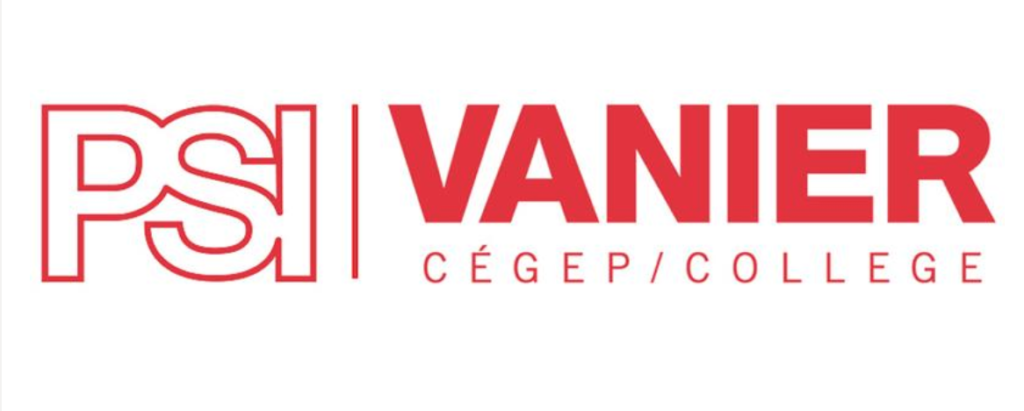On January 13th, Vanier College hosted Usha James from The Critical Thinking Consortium as our keynote speaker for Ped Day. Her presentation, titled Designing Courses and Assessments to Maximize Engagement and Deepen Learning, was inspiring and thought provoking. Usha provided teachers with some very helpful takeaways.
[T]he thinking classroom… is also a space where the expectations are so clear, the student never has to ask the question “Why are we learning this?”
Usha Encourages Teachers to Start with an “Overarching Critical Inquiry Question”
The Critical Thinking Consortium defines critical thinking as “… the quality of thinking required to competently pose and solve problems, reach sound decisions, analyze issues, undertake thoughtful inquiries and so on” (Case & Daniels, n. d.). To engage students in critical thinking, Usha invites teachers to use a backwards design approach, and to introduce an overarching critical inquiry question to students at the very beginning of a course or even at the beginning of a unit—before they encounter the course content. This overarching critical inquiry question, with which students are asked to engage regularly, drives teaching and learning throughout the course.
A critical inquiry question is a question for which there is no clear-cut answer. Rather than requiring students to memorize facts and content, a critical inquiry question engages students to think critically and to make decisions about important concepts embedded in the course. The critical inquiry question frames a ‘chunk’ of learning, be it an entire course, a unit of a course, or a lesson. A good critical inquiry question will engage students over a period of time.

Integrating Critical Challenges to Engage Students
Sounds straightforward enough, but just how do we do it? In her presentation, Usha provided us with a helpful analogy. Imagine that the overarching critical inquiry question like the horizon at sunrise or sunset. It is enticing and will always draw our attention. We will never tire of looking at it. But we will never reach it – it will always remain a goal or aspiration. Now pair that critical inquiry question with one or more critical challenges, which provides teachers the opportunity to scaffold the student’s learning. A critical challenge is a manageable task that is a step toward the horizon and helps teachers assess the student’s progress. Moreover, it helps students understand the “why” behind what they are learning, thereby making learning more relevant and meaningful. This, in turn, keeps them engaged!
When teachers integrate critical challenges throughout a course, students are given multiple opportunities to deepen their learning and engage with course content. Each critical challenge can target one or more elements of the course competencies. When teachers scaffold the critical challenges strategically, students are better prepared to demonstrate their learning in the overarching critical challenge at the end of the course. To use Usha’s analogy: the course’s critical challenges is like the mountaintop on their journey. It helps students develop the competencies needed to ascend the mountaintop and finally reach its peak by the end of a course. And, the overarching critical inquiry question, if it’s a good one, will still be enticing to student – like the horizon they can see even more clearly from the mountaintop – even beyond the end of the course!

The Thinking Classroom
By “turning Bloom’s [Taxonomy] on its head”(James, 2021)—that is, getting students to start with the higher-level thinking questions, without first having all the facts—students are given the opportunity to engage more critically with course material. By working through the critical inquiry question—recognizing what facts they have, what facts are missing, and what more they must investigate—students deepen their learning.
Usha defines the thinking classroom as a safe space where students know what is expected of them—to come to class and think. It is also a space where the expectations are so clear, the student never has to ask the question “Why are we learning this?”
You may be thinking, “Great concept, but are there tools available that will help me put these ideas into action?” The answer is a resounding, “Yes!” Although it would be difficult to go into an in-depth discussion on how to create a thinking classroom in this article, The Critical Thinking Consortium provides a helpful framework for teachers to create a critical thinking classroom that supports students in developing their critical thinking skills.
We invite you to consider Usha James’ approach to designing courses and assessments to maximize engagement and deepen learning.
If you did not have a chance to attend the Ped Day keynote on January 13th, we encourage you to access Usha’s presentation using the links below. Usha provides many helpful and practical takeaways that can be easily adapted to any class, course, or program.
If you and/or your department are interested in learning more about building critical thinking into your course and assessment design, please contact psisupport@vaniercollege.qc.ca or your
pedagogical counsellor.
Sound Familiar?
If you have been working with your department to develop learning integration assessments (LIAs), the end-of-term assessments that allow teachers to determine whether students have achieved a course’s ultimate goal—the course level learning outcome (CLLO)—Usha’s analogy will likely sound familiar. The critical inquiry question that Usha promotes is parallel in many ways to a CLLO. Her critical challenges are much like assessments you administer to check in on students’ attainment of what we call the key learning outcomes of your course. These challenges, which call upon students to engage with the critical inquiry question (and build toward the CLLO), are the learning milestones that lead to their success in the overarching critical challenge of the course—what we call the LIA.
The Critical Thinking Consortium (TC2) Resources
- How to create a TC2 Account and Access resources
- Introduction to the TC2 conception of critical thinking
- Watch the Usha James’ presentation during PED Day
- Session Recording Passcode: Ty$f4=Se
- Presentation Slides
- Presentation description: How do we motivate students to engage meaningfully with each other and with the course content? This interactive session will explore powerful but feasible ways to tweak course structures and assessment methods to increase student engagement and deepen learning.


Antoinette Cocciolo
is the Coordinator of the Pedagogical Support and Innovation office.

Tannia Ditchburn
is a Pedagogical Counsellor in the Pedagogical Support and Innovation office.
References
Case, R. & Daniels, L. (n.d.). Introduction to the TC2 conception of critical thinking. The Critical Thinking Consortium. https://tc2.ca/en/creative-collaborative-critical-thinking/about-tc2/our-approach/
Earle, J. (2016). Man standing on stone looking at sunset [Photograph]. Unsplash.
https://unsplash.com/photos/ICE__bo2Vws
James, U. (2021, January 13). Designing courses and assessments to maximize engagement and deepen learning [Keynote presentation]. Vanier Ped Day, Vanier College, Montreal, Quebec, Canada.
Tartes, T. (2019). Hikers on W. Trek [Photograph]. Unsplash. https://unsplash.com/@toomastartes


